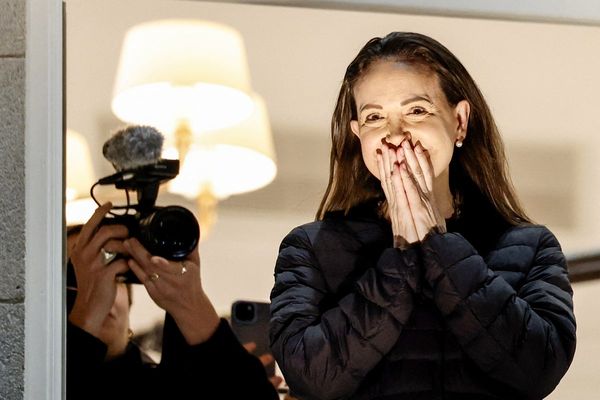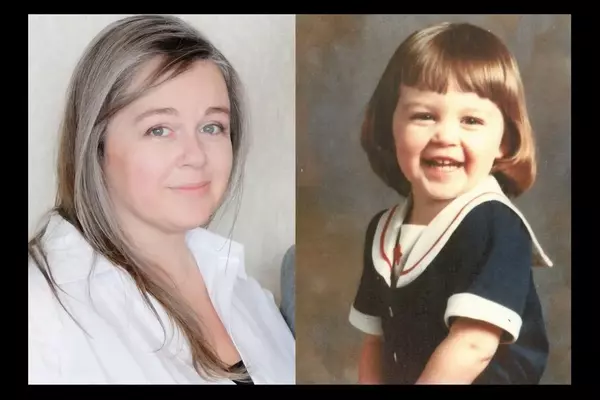
Political resistance is dyed in the wool for Yto Barrada. The Moroccan artist has spent her career experimenting with colour theory, deep diving into the history of dyes, disentangling the threads of colonialism and exploitation that run through the history of art. Her show at the South London Gallery is basically colour theory as resistance, minimalism as revolt, the dyeing process as anti-colonialism.
If that sounds brain numbingly leaden and eye-meltingly dull, you might be surprised by the results, because the gallery is actually a very pleasant pastel wonderland. The space is painted in thick white and light pink stripes (in a nod to a Daniel Buren mural in Casablanca that got painted over). It’s like walking through a bag of sweets. The walls are dotted with silk canvases that ripple with geometric shapes and shimmering soft colours. The dyes come from the Mothership, Barrada’s “eco-campus” in Tangier where she grows the plants and processes the pigments that get used in these artworks.
Dyes are not just colours here: they are symbols of colonial history, of how dyeing techniques have been imported and appropriated from all over the world for western financial gain. They’re symbols of industrialisation and exploitation.
A pile of big monochromatic cubes in the corner is a reference to modernist urban planning in Casablanca. A vitrine is filled with wooden blocks arranged into shapes based on acrobatic human pyramids. Everywhere here there are references to Moroccan culture and the history of modernism.
One work co-opts a Frank Stella painting, reimagining its mid-century minimalism in soft silken textiles. Another uses obscure colour theory to analyse the hues of a Tintin comic book about Palestine, reducing a complex story of displacement and erasure to a grid of yellow and beige squares. These are the colours of the desert, the architecture, the history of the region as seen through orientalist eyes.
Barrada’s approach is interesting, hugely collaborative and clearly intentional in the way it’s researched and expressed, but the results just aren’t particularly interesting. It all just looks like so much minimal abstraction, like grids and squares you’ve seen a thousand times. And that’s the main issue with most of the work here. As fascinating as her point may be, as clever, referential and passionate as her work is, at best it looks like a textile version of geometric modernism, at worst like a very nice silk scarf. It’s decorative and unexciting.
Even when she is exploring other ideas – such as those human pyramids, or the experimentation with “void fill” paper used in packaging and shipping – it never reaches particularly thrilling visual heights.
The best work here ditches the minimalist silks for sculptural installation. Wire crab cages have been stacked together and formed into a circle in the middle of the gallery. They reference another Tangier: Tangier Island, a crabbing community in the US at desperate risk of being lost to rising sea levels. Barrada’s permeable towers are a “beau geste”, a noble but futile gesture, an attempt to build a sea wall and keep nature at bay, to resist even in the face of certain destruction.
I like Barrada’s ideas, the narratives she explores, the histories she tears apart. But for the most part, the visual results are pretty, but very boring.
• At South London Gallery until 11 January







